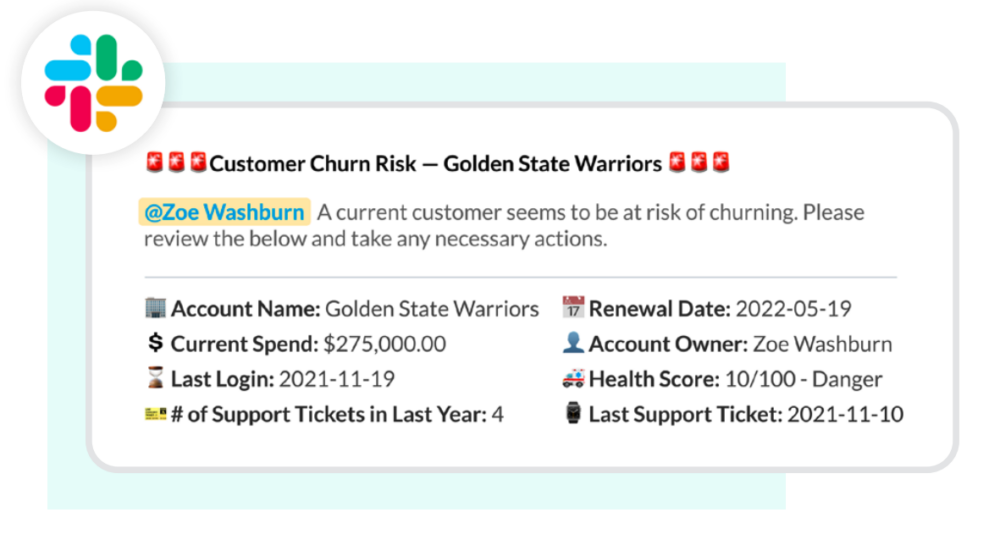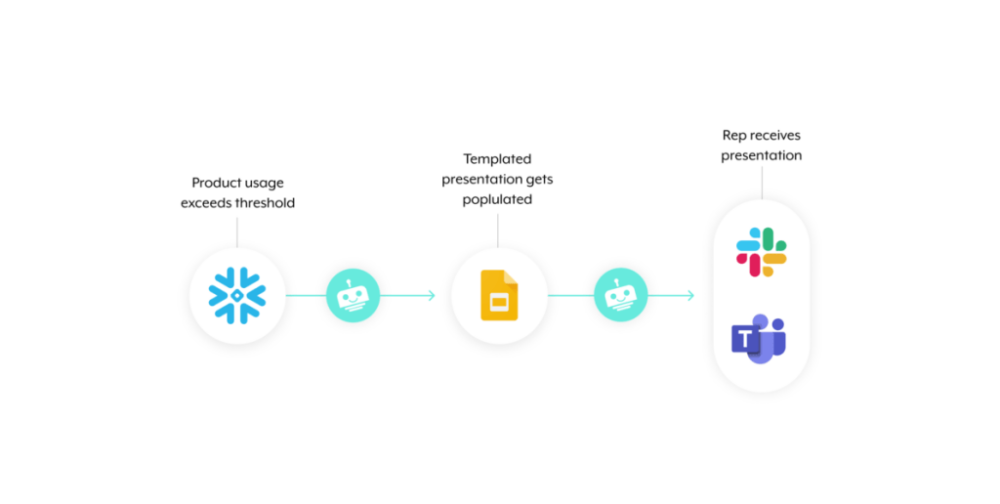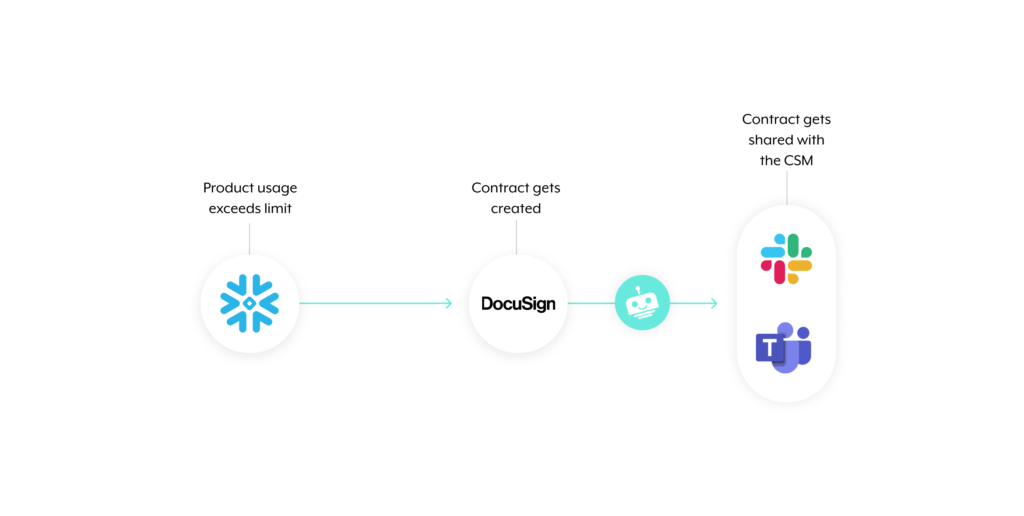How do you know when a client is on a path towards churning? When can you tell if a client is ripe for an upsell or cross-sell? And how can you decide if a prospect is close to—or far from—converting into a client?
Relying on pure intuition can lead you in the wrong direction, ultimately wasting your customer’s and prospect’s time as well as your own. And even if your teams have the relevant data on-hand, they might not know how to act on it.
Fortunately, you can distribute the timely and actionable insights your customer-facing teams need by using account intelligence.
We’ll show you how you can leverage account intelligence by breaking down a few examples. We’ll then share the benefits that come from using it effectively. But to make sure we’re aligned, let’s start by defining the term.

Learn how leading companies use account intelligence
Our whitepaper shares how Malewarebytes, HubSpot, and Slack rely on account intelligence to drive business outcomes.
What is account intelligence?
Account intelligence consists of all the data that’s relevant to a given prospect or customer. This includes their firmographic data, history of support tickets, product usage, among other types of first and third-party data. Moreover, account intelligence combines the data in a way that allows customer-facing teams to reach the right contacts with the right message at the right time.
Related: What is product intelligence?
How to use account intelligence
With this definition in mind, let’s walk through a few examples.
1. Alert customer success managers of churn risks
For every account, your success team likely has a variety of churn signals they need to stay on top of.
Using account intelligence, you can help your customer success managers (CSMs) track each signal across the accounts they manage, empowering them to respond to each client quickly and thoughtfully.
Here’s how it can work in the case of using the following signal: users at an account haven’t logged into your application for a specific length of time.
1. Once users at an account haven’t logged into your app for a predefined period, the workflow gets triggered.
2. A platform bot collects information on the account from a variety of sources, including their renewal date, level of spend, and the number of tickets created on their behalf.
3. The platform bot then goes on to share all of these insights with the assigned CSM via a message in their business communications platform (e.g. Slack).

Related: Examples of using automation to improve client retention
2. Arm reps with presentations for converting upsell or cross-sell opportunities
Even after a sales rep manages to identify a warm upsell or cross-sell opportunity, they’ll need to invest time in building a presentation that can successfully persuade the client to make the additional investment.
Account intelligence lets you streamline this entire process through the following automation:

1. Once an account’s level of product usage exceeds a certain threshold, the workflow gets triggered.
2. A platform bot goes on to collect information on the account from various sources, and it then uses the data it finds to populate a templated sales presentation.
3. The presentation gets shared with the assigned sales rep via a message in a business communications platform.
3. Auto-create contracts for clients that exceed their usage limits
In cases where a client goes beyond the usage levels agreed upon, the rep or CSM will need to create a new contract and have the client sign it as soon as possible.
To help streamline this effort, you can implement the following workflow automation:
1. As soon as a client’s product usage exceeds the allotted level, the automation gets put into motion.
2. A contract gets created in an app like DocuSign, which is auto-populated based on the account’s information in your ERP system.
3. A platform bot shares the contract with the appropriate CSM via a message in your business communications platform, where the message also includes a brief description of why a new contract needed to be created.
The benefits of account intelligence
Here are just a few reasons to adopt account intelligence:
- Customer-facing teams have a higher chance of success. By providing timely insights and prescriptive action items, these employees are all the more likely to take steps that help them meet their KPIs (along with their organizations’).
- The employee experience improves. Account intelligence allows employees to avoid hopping between apps to find the data they need; where instead, they can access the insights they’re looking for in the app they already work in: their business communications platform.
Moreover, a significant share of the data entry customer-facing employees typically perform gets streamlined by account intelligence, allowing them to focus more on the thoughtful, business-critical work they value—such as speaking directly to clients or prospects.
- Your clients and prospects receive more value. Done well, account intelligence ensures that clients and prospects receive proactive and personalized guidance on using your product more effectively. In addition, they’ll learn about additional products and services they can benefit from.
- Key business performance metrics will experience a lift. As our examples showed, account intelligence can benefit sales and retention; but more than that, it can elevate employee engagement, leading to improvements in employee retention and productivity.
- It can be implemented by customer-facing teams. Gone are the days of relying on IT or engineering to build the automations you need. Instead, specific employees within your sales and success teams can now use an enterprise automation platform to implement any workflow automation quickly and securely, on behalf of their department.
Related: 3 benefits of using a customer 360
Adopt account intelligence with Workato
Workato, the leader in enterprise automation, allows your customer-facing teams to implement integrations and automations without writing a single line of code. The platform also offers:
- Hundreds of thousands of automation templates and hundreds of pre-built connectors so that your teams can implement any automation quickly and with minimal customization
- Enterprise-grade security and governance features, like role-based access control, so that your sensitive, business-critical data is kept safe
- A customizable platform bot—Workbot—that can bring automations directly to your business communications platform, as well as allow your employees to access data and actions in your apps (that fall within their levels of permissions) within your business comms platform

